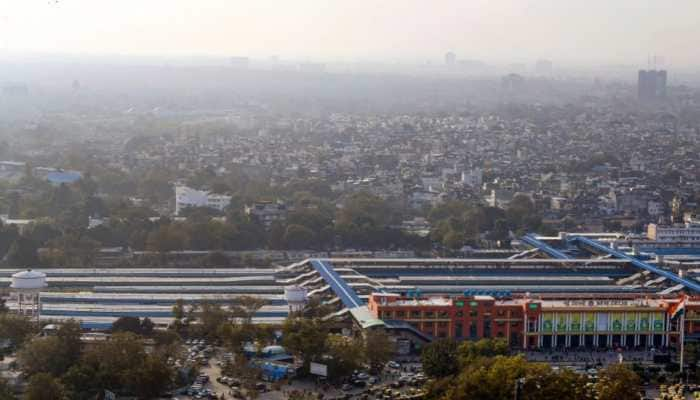India manufacturing PMI expands in February as output, new orders rise
The February PMI data pointed to an improvement in overall operating conditions for the eighth straight month.
- In PMI parlance, a print above 50 means expansion, while a score below 50 denotes contraction.
- Sustained sales growth supported the upturn in manufacturing sector output in February.
Trending Photos
)
New Delhi: India's manufacturing sector activities expanded in February as output and new orders grew at accelerated rates, supported by favourable demand conditions, a monthly survey said on Wednesday.
The seasonally adjusted IHS Markit India Manufacturing Purchasing Managers' Index (PMI) was at 54.9 in February, up from 54.0 in January, signalling a stronger improvement in the sector's health.
The February PMI data pointed to an improvement in overall operating conditions for the eighth straight month. In PMI parlance, a print above 50 means expansion, while a score below 50 denotes contraction.
Sustained sales growth supported the upturn in manufacturing sector output in February. Moreover, firms responded to strong increases in new work intakes by lifting production, input buying and stocks of purchases, the survey said.
"Latest PMI data for India's manufacturing sector revealed an improvement in operating conditions in February. Output and new orders expanded at stronger rates, while buying activity continued," said Shreeya Patel, an economist at IHS Markit.
"There were, however, some key concerns that continued to threaten growth. Most prominently, cost pressures remained elevated as a result of shortages while delivery times lengthened once again. However, a key threat to manufacturers comes from only marginal increases in selling prices."
There were some signs of capacity pressures on Indian manufacturers, with backlogs rising marginally. Despite this, and a pick-up in demand, employment decreased. The overall rate of job shedding was only fractional.
Patel, however, noted that sustained increases in backlogs could lead to higher employment levels in the months ahead, should capacity pressures continue.
On the price front, strengthening demand for raw materials led to another marked rate of input price inflation. Input price inflation softens to a six-month low.
"For now, India's manufacturing sector has weathered the storm of the Omicron variant, undoubtedly supported by the relatively high inoculation rate. Moreover, demand conditions showed notable signs of resilience and price pressures somewhat receded," Patel noted.
According to official data, India's GDP growth slowed to 5.4 per cent in October-December 2021.
Asia's third-largest economy is projected to grow 8.9 per cent in the fiscal year ending March 31, slower than previously anticipated 9.2 per cent, according to the data released by the Statistics Ministry on Monday.
The weaker pace of growth came ahead of the heightened geopolitical risks to the economy from higher prices of commodities and energy after Russia invaded Ukraine. Also Read: Aadhaar Card for Sex Workers: UIDAI eases rules; informs about special facility
Though the third COVID wave has now subsided, the economy faces headwinds, arising out of the geopolitical situation caused by the Russia Ukraine conflict. Also Read: Sensex plunges 778 points on escalating Russia-Ukraine tensions
Stay informed on all the latest news, real-time breaking news updates, and follow all the important headlines in india news and world News on Zee News.
Live Tv







)
)
)
)
)
)
)
)
)
)
